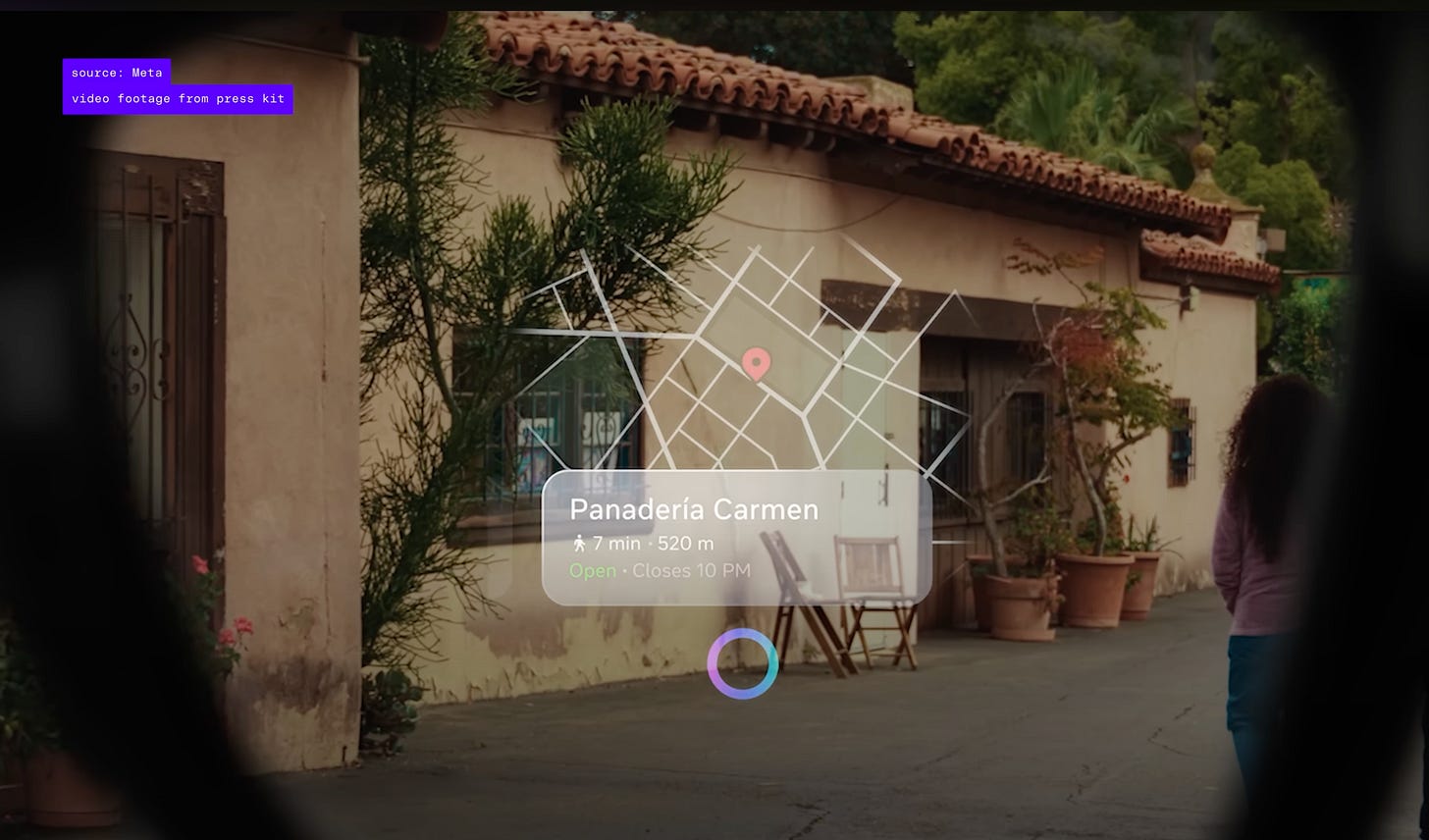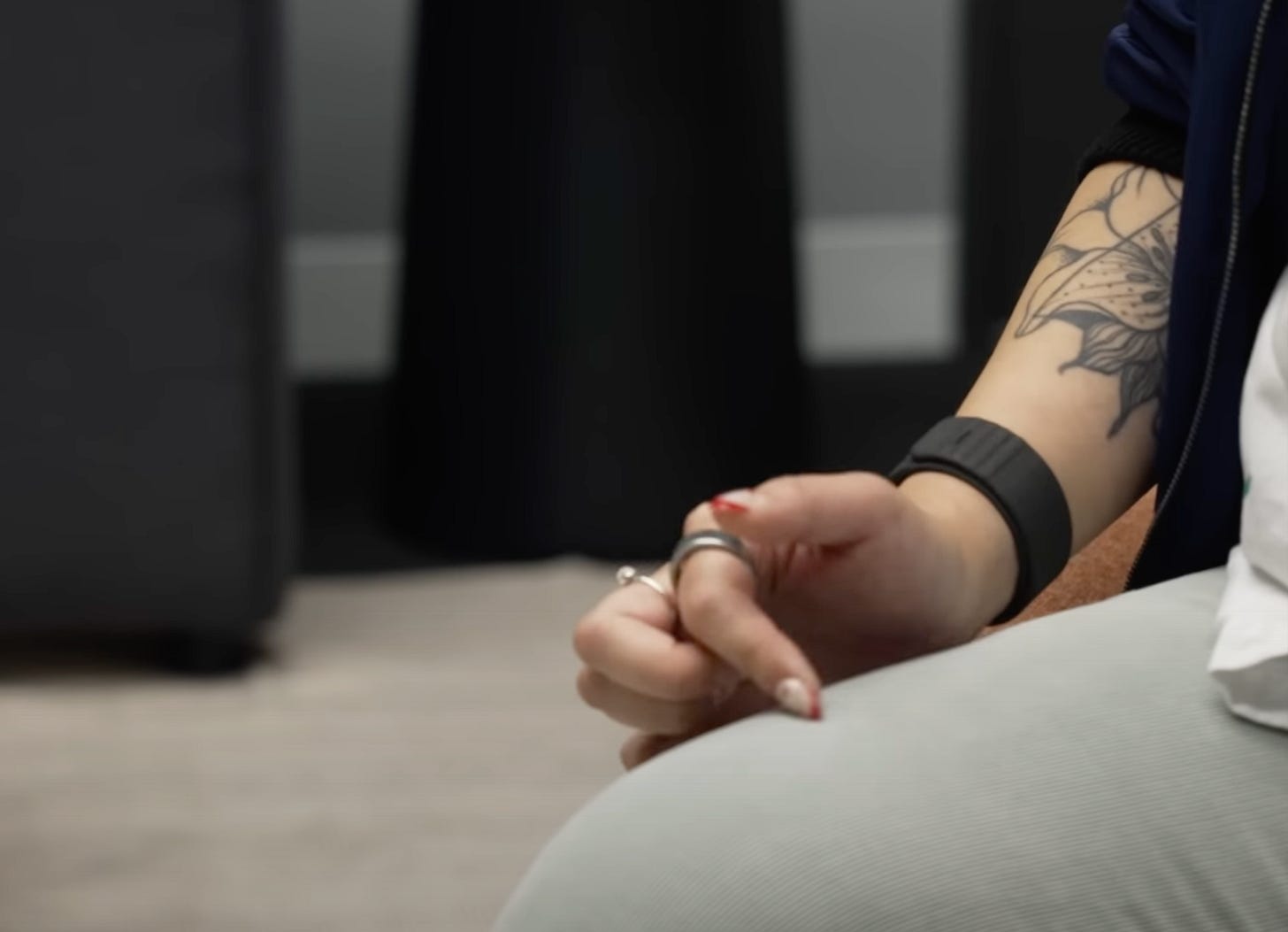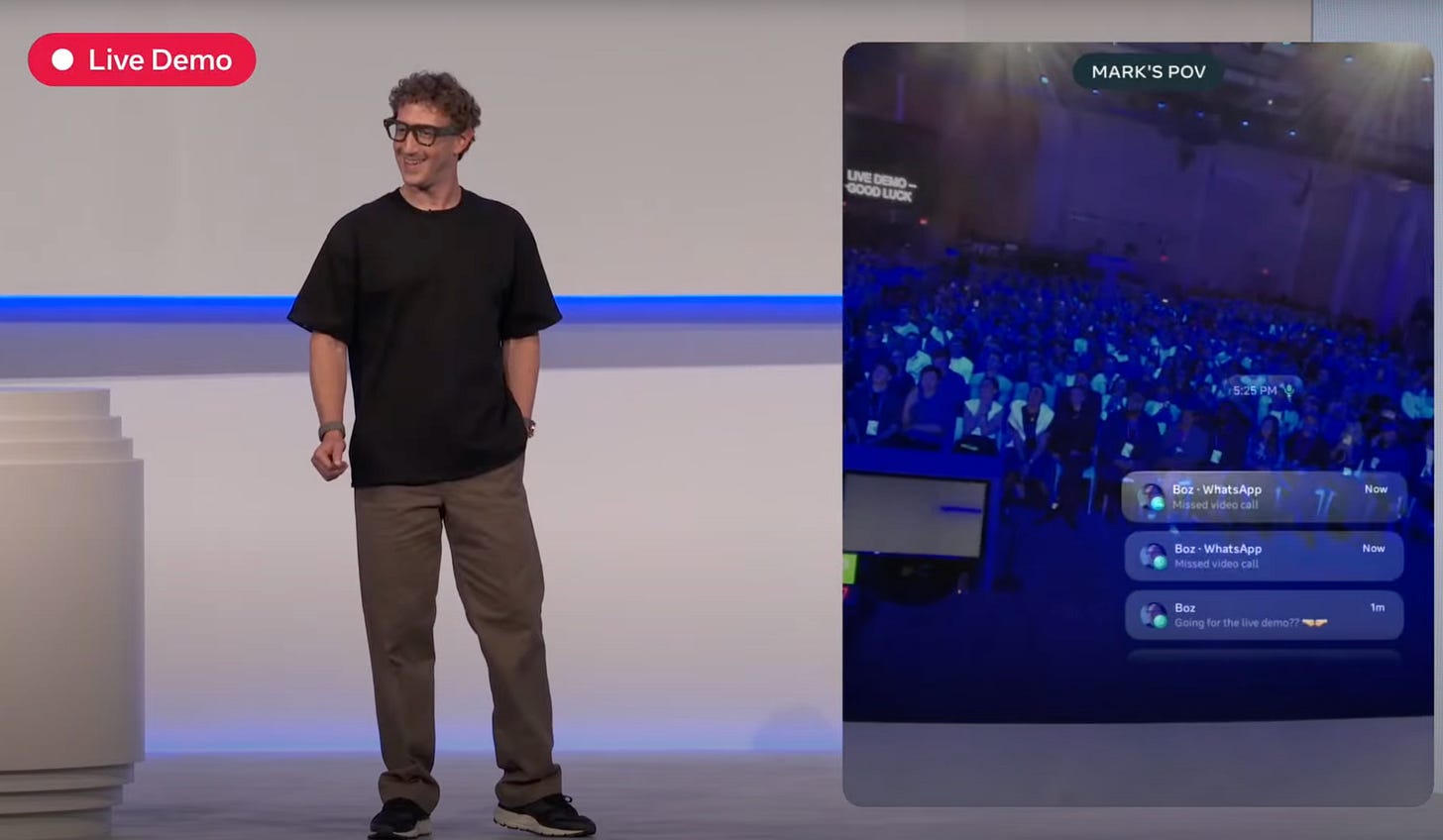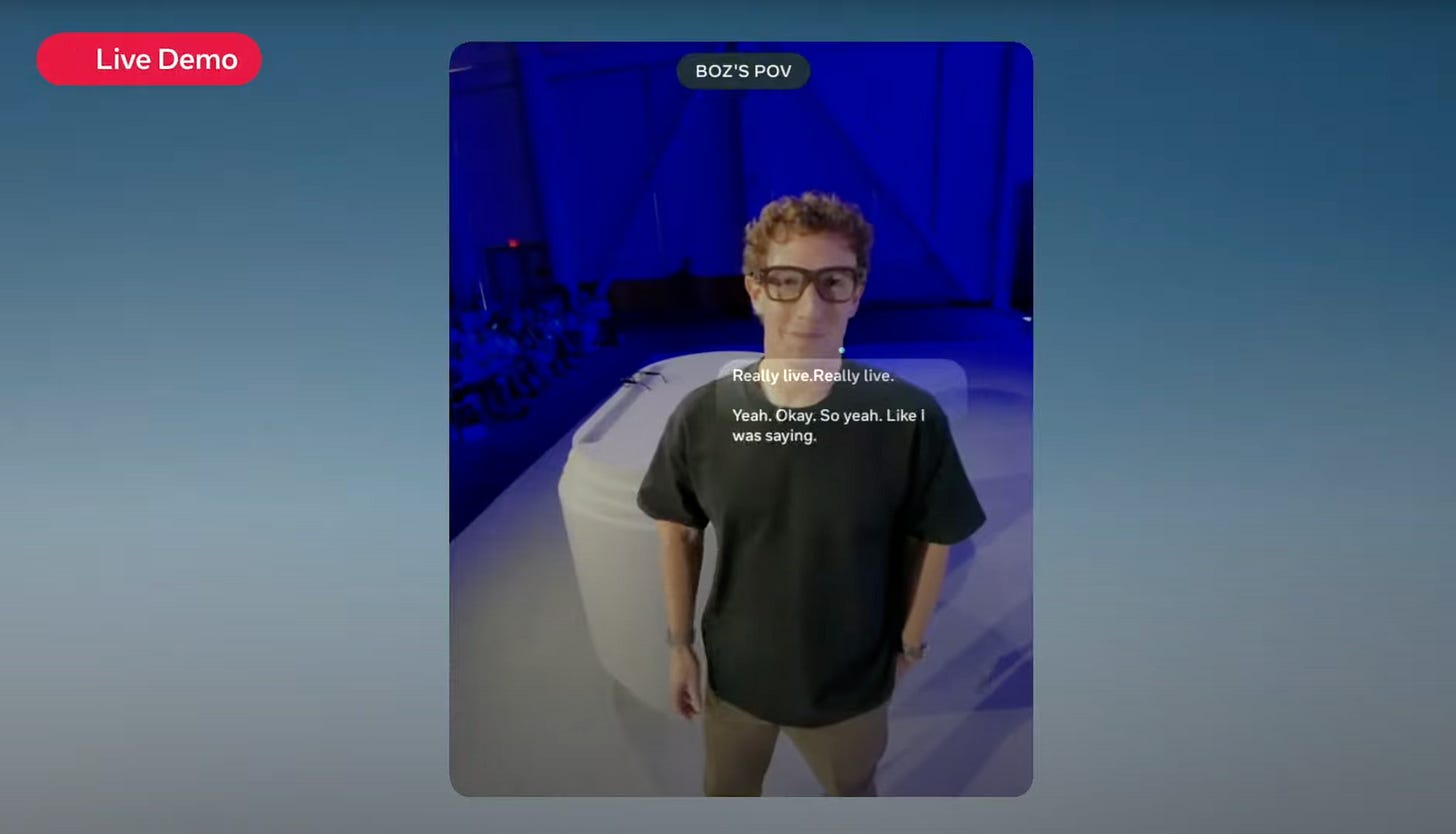Meta's Connect demo: proof that bold beats perfect
The demo wasn’t perfect. But if you’re hung up on the failures, you’re missing the point.
Last week at Meta Connect, Mark Zuckerberg took the stage to show off the new Meta Ray-Ban Display glasses. And you probably heard there were several hiccups in the demo.
In one segment of the demo, a chef tried to say: “Hey Meta, start Live AI.” and asked for the first step in making a sauce. The Meta AI kept getting confused and providing the wrong answer.
Despite this, Zuck doubled down in a later segment:
“Do you want the slides or a live demo?”
The audience shouted “live demo!!!”.
That’s when he tried to pick up a WhatsApp video call from Boz (Meta’s CTO, Andrew Bosworth). The glasses just kept ringing, over and over.
And no, he wasn’t trying to ghost Boz.
The funny part is, I don’t think it mattered that the video call didn’t work. The micro-gesture capability, where Zuckerberg wrote out a text with his finger or took photos of Boz, and the demonstration of live captions, were that impressive.
Why do live demos fail so often?
The whole incident got me thinking, why do live demos nearly always have some hiccups?
It doesn’t matter how well-funded the company is, how committed they are, or how well prepared they are…
Meta’s CTO later revealed the chef demo failed because all live traffic was routed to the dev server. When the chef said “Hey Meta, start Live AI”, it activated Meta AI for all the glasses and headsets in the building. The dev server collapsed under the load.
Separately, during the WhatsApp demo, they discovered a brand-new bug live on stage: the glasses went to sleep at the exact moment the video call came in.
There’s an old set of laws called Murphy’s Laws that explains this best.
Aerospace engineer Edward A. Murphy Jr. developed a set of tongue-in-cheek laws that explain live demo failures surprisingly well. (Side note: Check out Murphy’s Laws. They’re surprisingly useful for designing product builders to design resilient systems.)

“Anything that can go wrong will go wrong.”
“If there is a worse time for something to go wrong, it will happen then.”
“If you perceive four possible ways a procedure can go wrong and prevent them, a fifth will promptly develop.”
Meta must have rehearsed dozens of times. But they probably never rehearsed with a building full of Display Ray-Bans. That’s the truth: demos fail not because teams are underprepared or the tech isn’t ready, but because real-world conditions always surface edge cases rehearsal never can.
Live Demos > Marketing mumbo-jumbo
Despite the hiccups, the technology was undeniably impressive, and the decision to keep the live demo going shows Zuckerberg’s confidence in the technology.
In a sea of over-polished marketing materials, live demos show:
✔️ Credibility: the product is real.
✔️ Confidence: the team is willing to risk failure.
✔️ Rawness: audiences value authenticity & moving fast more than perfection.
What to Pay Attention To
The demo wasn’t perfect.
But if you’re hung up on the failures, you’re missing the point.
Meta’s boldness: They’re moving fast and not afraid of public failure.
New ecosystem: Expect an explosion of new apps for Meta glasses. AR’s real wave is starting and the opportunity for product builders and developers is ripe. This example from The Verge review, shows how map directions will be overlaid onto the glasses view. Think of all the additional use cases that will explode in this space beyond consumer use cases, like in enterprise or industrial contexts where hands-free operation of devices is critical.

Micro-gesturing: This will redefine UX in the next 10 years. Writing text with your finger is primitive and futuristic at once: software bending back to human instinct. Product Builders will have to design for more intuitive, more natural, and more discreet gesturing in products.

Source: The Verge demo
👉 Takeaway for Product Builders: Failing on stage isn’t a bug, it’s a signal you’re pushing the edges of what’s possible.
💬 What are you taking away from this demo? Let me know in the comments below.





